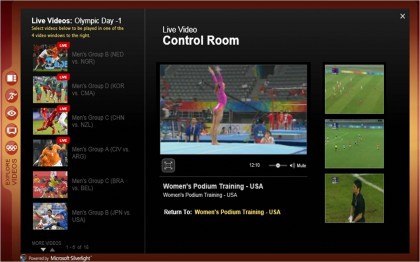The Olympics aren’t supposed to start until tomorrow, but they officially began online last Tuesday night. Take a trip over to the NBC Olympics site and you’ll see video of early soccer matches, including a full replay of the US women’s defeat at the hands of Norway. Except for the defeat itself, it’s a beautiful thing. Thanks in no small part to Limelight Networks.
In the interest of full disclosure, I should note that I’ve recently started doing contract work for Limelight, a content delivery network (CDN) service provider. So take these thoughts with a few grains of salt. However, when I sat down to interview Limelight SVP Dave Hatfield, I wasn’t interested in Limelight, per se, but the bigger story around the Olympics. Limelight Networks is delivering all of the NBC Olympics video streams (Akamai is supporting delivery of static objects), and I figured the folks there would have some interesting insights into how NBC is going to pull off this monumental task: NBC intends to deliver 3,500 hours of coverage online including 2,200 hours of live streaming video. It’s literally mind-blowing, and certainly unprecedented. Here’s what I learned about how they plan to do it.
The Player
Before getting on the phone with Hatfield I checked out the early videos on the NBC Olympics site. The Microsoft Silverlight player is sweet. You can watch four video streams at once and turn on features like live text commentary. There is also no latency. Zero. Click to any point within a stream and the video instantly switches to that frame. I asked Hatfield about that lack of buffering and about the bandwidth demand created by allowing a single computer to access four streams at once. Regarding the latency, he talked about how the Limelight CDN is structured. The CDN plugs directly into the access networks of ISPs all over the globe, and Limelight’s private fiber network is used to transfer content at the speed of light between massive server hubs whenever necessary. It’s a great story, but the proof is in the application itself. Did I mention the zero latency? I’ll be curious to see how that holds up once the actual Games start.
Regarding the bandwidth, Hatfield didn’t seem to be the least bit concerned. The scale of the Olympics is new, but streamed events are becoming more common, each Web event tending to break the record set by the one before it. Unfortunately, we can’t predict how much bandwidth the four-window application will actually use because we don’t know what bit rate NBC is using on its videos. By using an adaptive bit rate, NBC can transfer video at whatever rate a viewer’s ISP can handle. But as far as I can tell NBC hasn’t disclosed the highest bit rate it’s using for the fastest connections.
